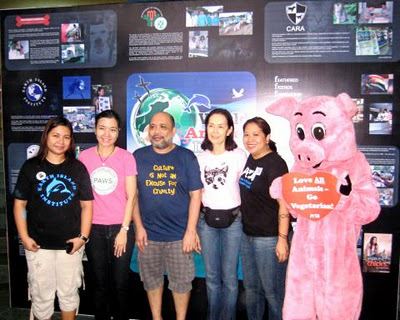The largest dolphin and whale slaughter on the planet starts September of every year in a small fishing village in Taiji, Japan. Here, some forty-eight fishermen herd hundreds of small whales and dolphins to a cove.
Representatives of ocean parks and aquariums buy the nicer looking animals first while the rest are slaughtered for meat and sold to grocery stores all over Japan.
The brutal hunts has been the subject of the 2010 Oscar winning documentary The Cove, which features dolphin-hero Ric O’Barry, a one-time dolphin trainer in the ‘Flipper’ TV Series of the 1960s. When one of the dolphins playing ‘Flipper’ died, O’Barry had a change of heart and had since dedicated his life to advocating for the well being of all dolphins on the planet.
Every year, O’Barry calls on all dolphin-lovers of the world to expose the brutal killings in Japan. Dubbed ‘International Japan Dolphin Day’, activists all over the world troop to their Japanese embassies to urge the Japanese government to stop the killings. In the Philippines, the protest is led by Earth Island Institute (EII) together with the Philippine Animal Welfare Society (PAWS), Compassion and Responsibility for Animals (CARA), and the Dolphins Love Freedom Network (DLFN).
The Philippine Connection
In the Philippines, the Fisheries Administrative Order (FAO 185) bans the catching, killing and even mere possession of dolphins. Furthermore, the Animal Welfare Act (RA 8485) bans any kind of torture or maltreatment of any animal. Despite these laws however, dolphins from the brutal hunts have found its way into the country. In 2001, the country imported 5 false killer whales, four of which already died performing at the Ocean Adventure Park in Subic. Another 4 bottlenose dolphins arrived in the country in 2004, one of which is now dead. In 2009, another 4 bottlenose dolphins were imported from Japan.
According to Trixie Concepcion of Earth Island Institute, “The Philippine Government must stop supporting the dolphin slaughter in Japan by banning the importation of dolphins into the country. These importations run counter to the existing laws in the country.”
The protesters are also calling the general public to stop patronizing dolphin shows. According to The Cove, marine parks and aquariums buy animals from Japan for their dolphin shows and a single untrained dolphin can cost as much as $150,000. The money paid by the dolphin show industry is one major reason why the hunts persist despite the fact that majority of the Japanese people do not eat dolphins, and it is thus clearly uneconomical to kill dolphins for food.
Another major issue in the slaughter is that meat from dolphins is being sold as food in Japan. Experts who tested the dolphin meat say that it is highly toxic, having mercury levels much much higher than the allowed limit set by the Health Department of Japan.
Protesters say that the demonstration is not only about animal welfare, it is also very much about human welfare. Coming from the tragedy of the massive earthquake and tsunami that hit the Japanese peninsula last March, participants in the Japan Dolphin Day in Manila brought Japanese lanterns and featured a dolphin dance in their program.
The dolphin dance symbolizes healing for Mother Earth and the Japanese lanterns symbolize enlightenment, forgiveness and a wish that the departed souls of both humans and dolphins find a happy resting place.
__________
Video footages from Earth Island Institute and THE COVE,
Video and Sounds Edited by: Lester Miranda
Directed by: Angela Colmenares
Music from THE COVE, SURVIVOR, & AVATAR
Earth Dance performed by THE JAZZERS
Write-up from Earth Island Institute Philippines
